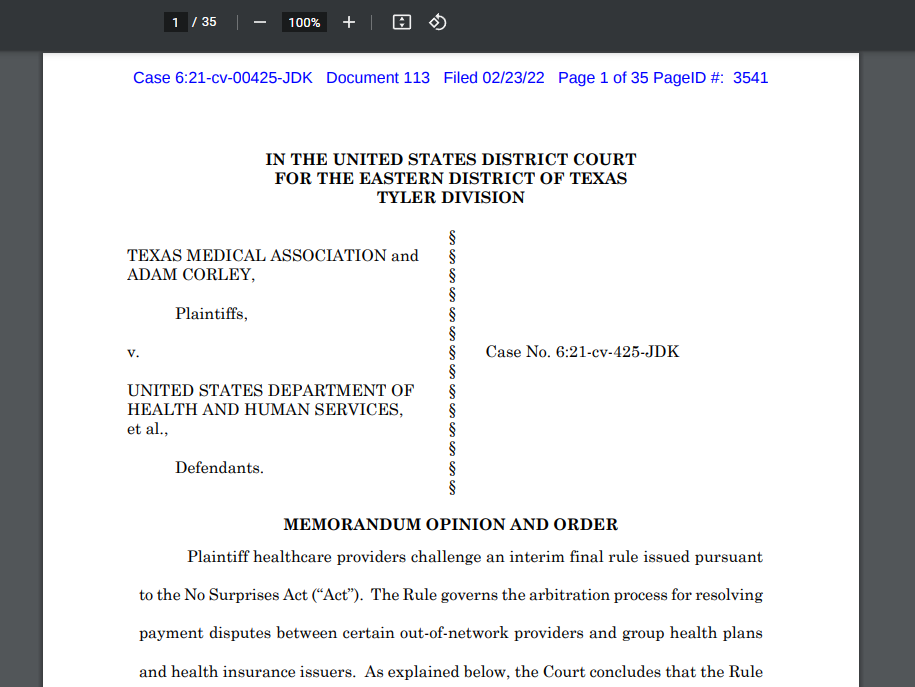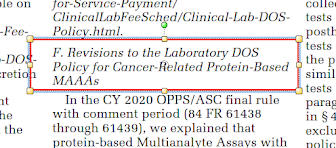Top Line
In this blog, I take a quantitative look at the medtech investment game theory, under Medicare coverage as "status quo," MCIT, and CED. The model predicts that product value is almost 4X higher under the MCIT paradigm as the CED paradigm.
The CED paradigm is worse than the status quo even when the Medicare status quo takes 2 years with a 50% failure rate, but the CED path has a 90% success rate. The simple Excel is here.
Introduction
As everyone in the medtech industry knows, the Trump Administration created "MCIT," Medicare Coverage for Innovative Technologies, which promised 4 years of immediate coverage for all FDA breakthrough devices. The Biden administration canceled it, but is holding "listening sessions" on future ideas for accelerated coverage.
Listening Session
The first 90 minute listening session was February 17, with 700 listeners and 20 speakers. (See a preview blog by me here, my 3 minute video recap here, and an unofficial transcript here).
No Quantitative Rationales Offered!
None of the speakers gave anything approaching a valuation argument for MCIT, versus the status quo, or MCIT, versus "CED" alternatives. At least one speaker warned the FDA "Breakthrough" bar was too low a bar. (See FDA webpage for breakthrough device policy, here.)
I was reminded of an excellent podcast sponsored by USC last fall, where Trump administration policymakers Scott Gottlieb and Joe Grogan talked about the rationale for MCIT (podcast here or here, see also a Grogan op ed here). They emphasized that the MCIT was intended to boost investment in promising medtech, at little or no cost to the government. If devices failed "breakthrough" approval, they would never reach Medicare, if they were successful Medicare would cover them anyway, just not as promptly.
Listening to the 90 minutes of discussion on February 17, and looking back the Gottlieb/Grogan talk, I test-drove some investment models with the status quo, with MCIT, and with the alternative CED. In a model where an investor would be willing to invest $7M today in the status quo, he should be willing to invest $18M (2.5X) under MCIT. This means, for example, if the product clinical trials cost $10M, they'd be canceled under the status quo, but green-lighted under MCIT. On the other hand, in the same model CED was value-destroying (from $7M to $5M), even when you belieeve that CED raises the chance of Medicare coverage from 50% to 90%.
The models below are intended to be for discussion only; one could easily use different models, discount rates, and different decision thresholds. However, I provide a model for at least thinking about the status quo, MCIT, and CED in a quantitative way.
1) THE STATUS QUO MODEL
In the status quo, the product spends 2 years in clinical trials, 1 year in FDA review, and then 2 years in CMS review. There's pilot data enough to merit Breakthrough status. Pivotal clinic trials will begin now if funding is raised.
Assumptions. FDA review has a 50% chance of success (an innovative product with meaningful science risk.) CMS review also has a 50% chance of success in 2 years. (This is an out of the box product, like the HeartFlow FFR test, or Procept Aquablation surgery, innovations that can easily sink > 2 years in an uncertain CMS review). Discount rate is 10%. The investor will invest up to half the current discounted risk-adjusted value of the future product. We use a terminal value for free cash flow of $100M occurring right after CMS approval. (We imagine this reflects $20M free cash flow on $100M of sales per year for five years, but the details are irrelevant since we are only using the $100M value).
So by agreement we are assuming the successful product is worth the value $100M in 2027. CMS has 50% approval ($50M), and track back two years to the FDA approval you have $40M. FDA approval is 50%, you you have $20M, and track back three years to today, the discounted NPV today is $14.8M. Remember, I have many choices and will only invest if I expect a return, so I'll invest up to $7.4M. This means if the clinical trials cost $6M, I'm funding them, and if the clinical trials cost $15M, I'll pass and kill this project.
(For the layout in Excel, see "STATUS QUO" figure at bottom).
2) MCIT MODEL
I'm using the same future value of the project at $100M, upon CMS approval. However, CMS approval is 100% and occurs immediately upon FDA approval, so I can skip two years of discounting because there's no CMS review. I still have 50% chance of FDA success, 3 years in the future at a 10% discount rate. Now today's value of this product idea is $36M, which means I'm happy to invest up to $18M. If the clinical trials will cost $15M, this project is greenlighted and the product will be created (allowing for science risk). The NPV has been raised from $15M to $36M, almost 2.5X, which means the investment merited, though smaller than the NPV, is also raised greatly.
(For the layout in Excel, see "MCIT" figure at bottom.)
3) CED MODEL
This really fizzles. We have the same initial three years of development and FDA review, with success at 50% with the FDA. However, now we go into 2 years of negotiation for an NCD and CED, and we'll assume the chance of CMS success rises from 50% to 90%. However, at that point, we get three years of CED which I assume has 10% of product sales and 0 profit (due to the small scale and trial costs). Then in year 4 and 5 (after CMS approval and CED starts) we're back in the normal revenue model of $100M sales, $20M profit in years 4,5 after CMS approval. I add in a 3-year discount because now revenue starts in Year 4 after CED approval rather than Year 1 (0.9^3 = .72).
Now the NPV has fallen to $7.8M, which means investors will not want to invest more than $3.9M. Less than in the base case and only about 20% of the MCIT value (8/36). But remember, it's not just that developers make less money, it's that many projects will fall below the "red line" and fail to get funded at all; the innovative medtech products won't exist, or, won't have the chance to be studied and brought to the FDA.
(For the layout in Excel, see chart "CED MODEL" figure at bottom.)
Conclusions and Considerations
So in these simple models, MCIT triples the value of a risky med tech product. One of the best ways to think of this is that many more products would achieve VC funding, and in the interests of the VCs, under MCIT.
It's important to understand the difference between the regulatory effect of MCIT and the policy goal of MCIT. The "effect" is to start Medicare coverage on FDA approval. But the "policy goal" is to spur and encourage investment the day after FDA issues breakthrough coverage (as in these models). To accomplish that, it's critical to make the promised coverage independent of future events during or after development (though as I'm about to show, problems are self-limiting).
But doesn't MCIT provide "too low a bar" for CMS coverage? I'd argue this risk is far overweighted and largely self-fixing.
- If the product is promising after Phase I trials, and gets breakthrough status, that's far from approval. Some products won't get funded further, or will have unexpected poor results. Some won't pass FDA approval, and CMS automatically doesn't have to worry about them.
- Other products will pass FDA, but have marginal improvements at best. I argue this usually takes care of itself. For example, ten years ago, CMS covered Provenge under an NCD, and on-label, yet the tens of thousands of patients and billions of costs never materialized. (The product peaked at $300M per year, divided by $100K is about 3,000 patients, then downward).
- On the other hand, if the product is really good and a big improvement, then it will move into standard of care and CMS would pay for it anyway, it just moves faster with MCIT.
Overall, I came out of this modeling experienced much more impress with the potential social and economic value of MCIT than I had been before.
For quotes from Grogan-Gottlieb interview, here. The MCIT was dead simple (get BT status, finish trials, get approval, get 4 years coverage, it stops). This simplicity was a feature, not a bug, when you understand it was intended to spur investment on the day after BT status and innovation quality was approved, such as based on Phase 1 trials.
The Three Models (Click to Enlarge)
 |
| Status Quo |
 |
| MCIT |
 |
| CED |
____
Two interesting books on innovation in healthcare:
Burns, LB. Business of healthcare innovation.
Burns, L.B. US Healthcare ecosystem: Payers, providers, producers.




















